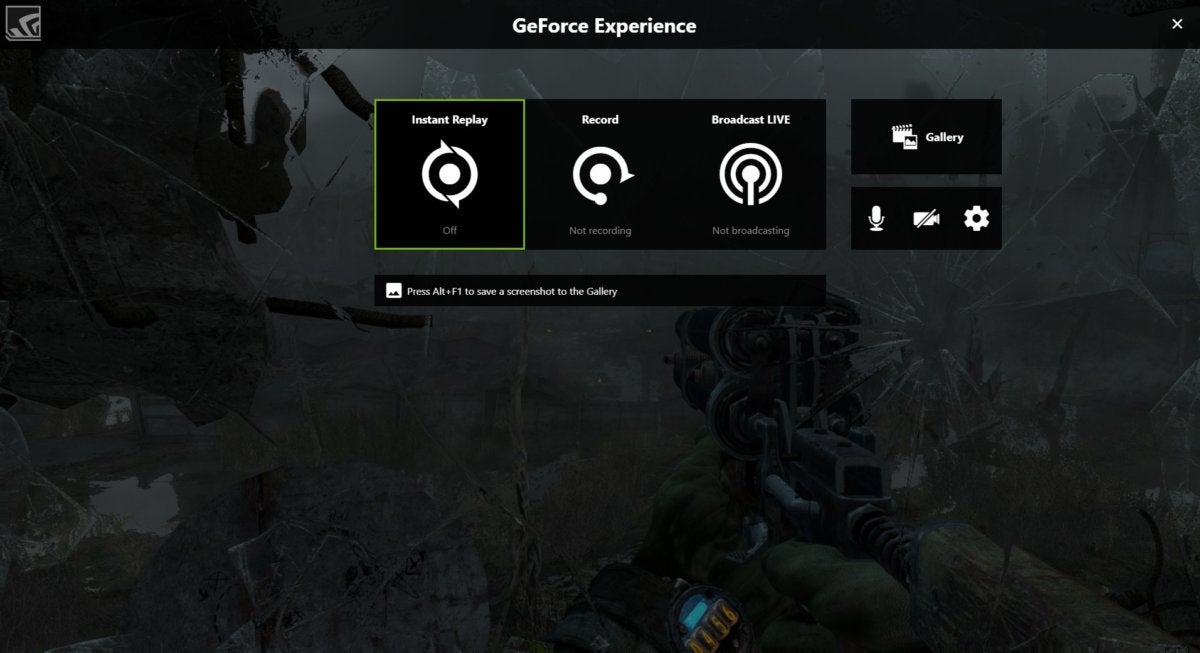

Performance Tracers (debug users only) How do I change the Keybinds on my Nvidia overlay? To learn about keyboard shortcuts, press shortcut Ctrl+slash. To enable screen reader support, press shortcut Ctrl+Alt+Z.
In the Game DVR settings you’ll also see options for recording your mic during gameplay, and below that you can choose to capture video at 30 or 60 frames per second.

The maximum recording time when Game DVR just runs is up to 2 hours by default, but you can also set it for 30 minutes, one hour, or four hours. If you are running shadowplay features like instant replay, record, or live stream then yeah, it will affect FPS to varying levels depending on GPU. Launch any game and then press Shift + ` (or whatever key combo you set earlier) to bring up the in-game overlay menu. A green light will appear, indicating NVIDIA ShadowPlay is enabled. Click the switch at the left of the ShadowPlay window to flip it to on. To enable it, you’ll need to launch the NVIDIA GeForce Experience application and click the “ShadowPlay” button at the top right corner of the window. Press the gear icon, then keyboard shortcuts, click on the binding you want to change and then input what you want it to be rebound to. How do I turn off hotkeys in GeForce?Ġ:433:03How to Change/Disable Keyboard Hotkeys of Nvidia GeForce – YouTubeYouTube How do I change the hotkeys in GeForce? What does Alt Z mean?Īlt+Z is a keyboard shortcut most often used to access the GeForce Experience in-game overlay. The “Instant Replay” feature is the only gameplay recording feature enabled by default. You can also open the GeForce Experience application and click the “Share” icon to the left of your name. In our testing at the time we discovered the RTX 1080 would take a comparatively larger hit to performance while the feature is enabled, though.To launch it, press Alt+Z. While short of official support, not long after launch it was discovered a simple code change (opens in new tab) would enable the RTX Voice feature on non-RTX cards. This isn't actually RTX Voice's first outing on non-RTX cards. From there it's fairly self-explanatory: you open the app, select your mic input, and decide what degree you'd like to remove unwanted background noise. You'll need to pick up the latest version of the Broadcast app (opens in new tab) to get it up and running. With the latest update to RTX Voice, which now goes by 'Noise Removal' in the RTX Broadcast app, it's possible to run the feature across a wide range of GPU generations (nice spot, Tom's Hardware (opens in new tab)). Best gaming monitor (opens in new tab): pixel-perfect panels for your PCīest 4K monitor for gaming (opens in new tab): when only high-res will doīest 4K TV for gaming (opens in new tab): big-screen 4K PC gaming


 0 kommentar(er)
0 kommentar(er)
